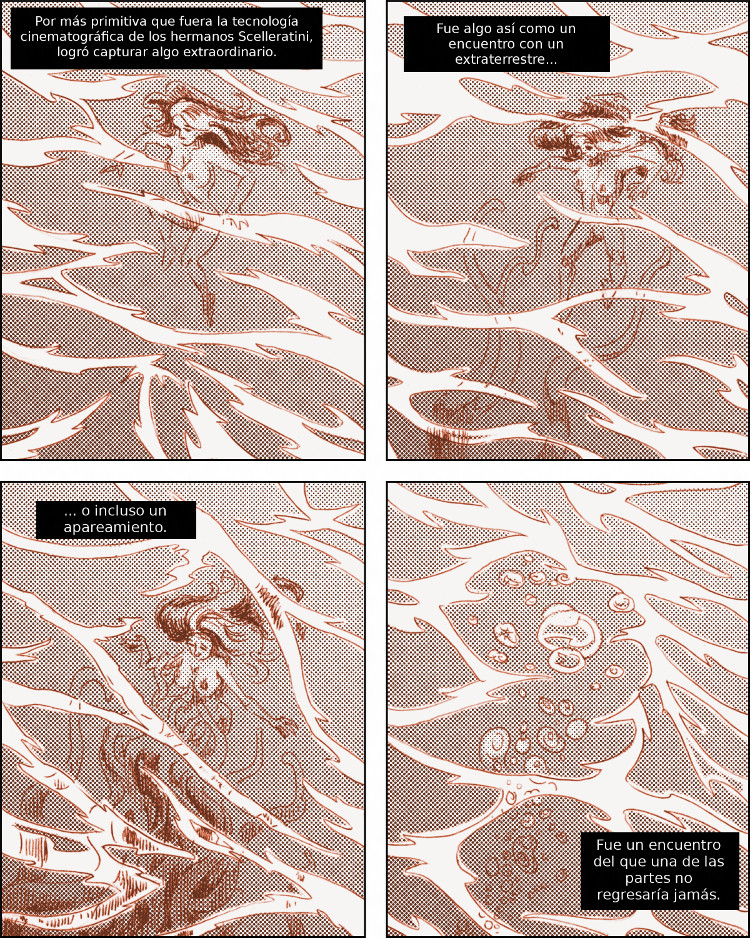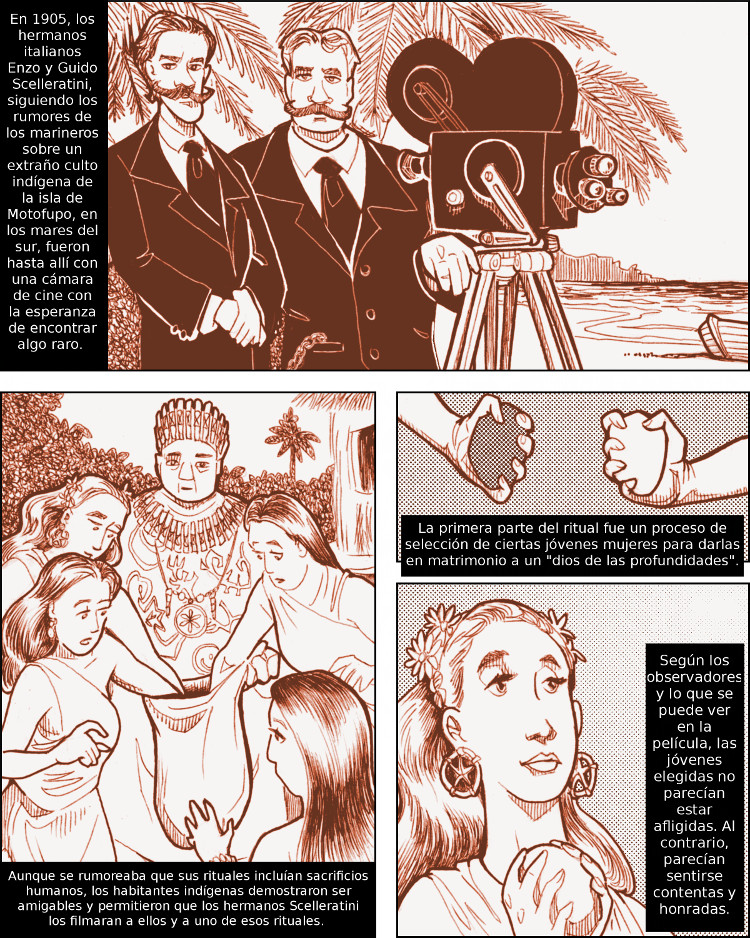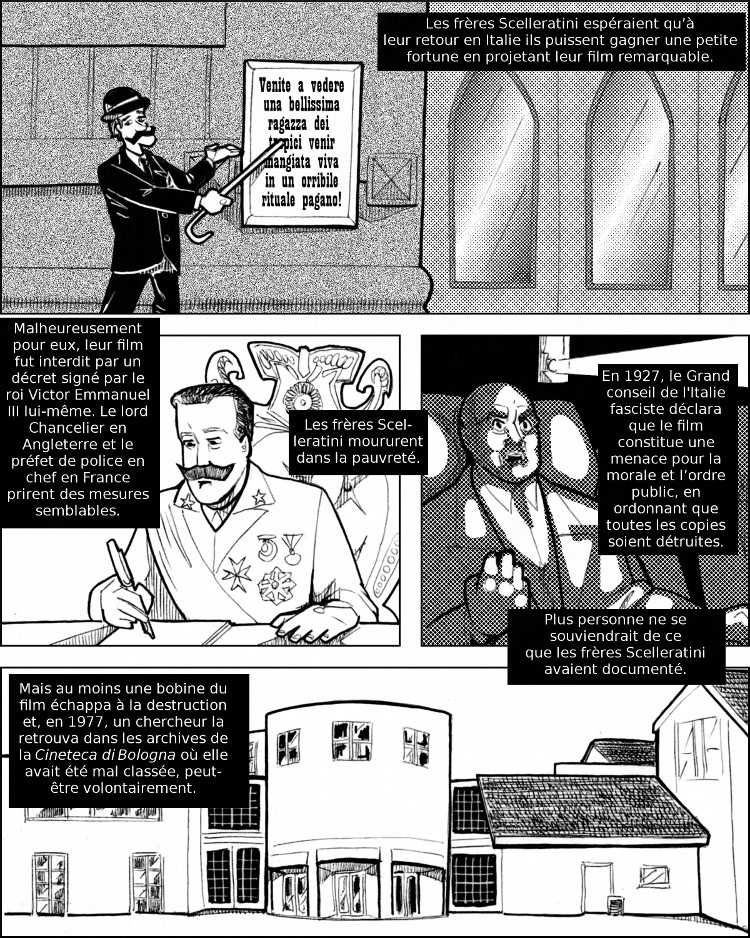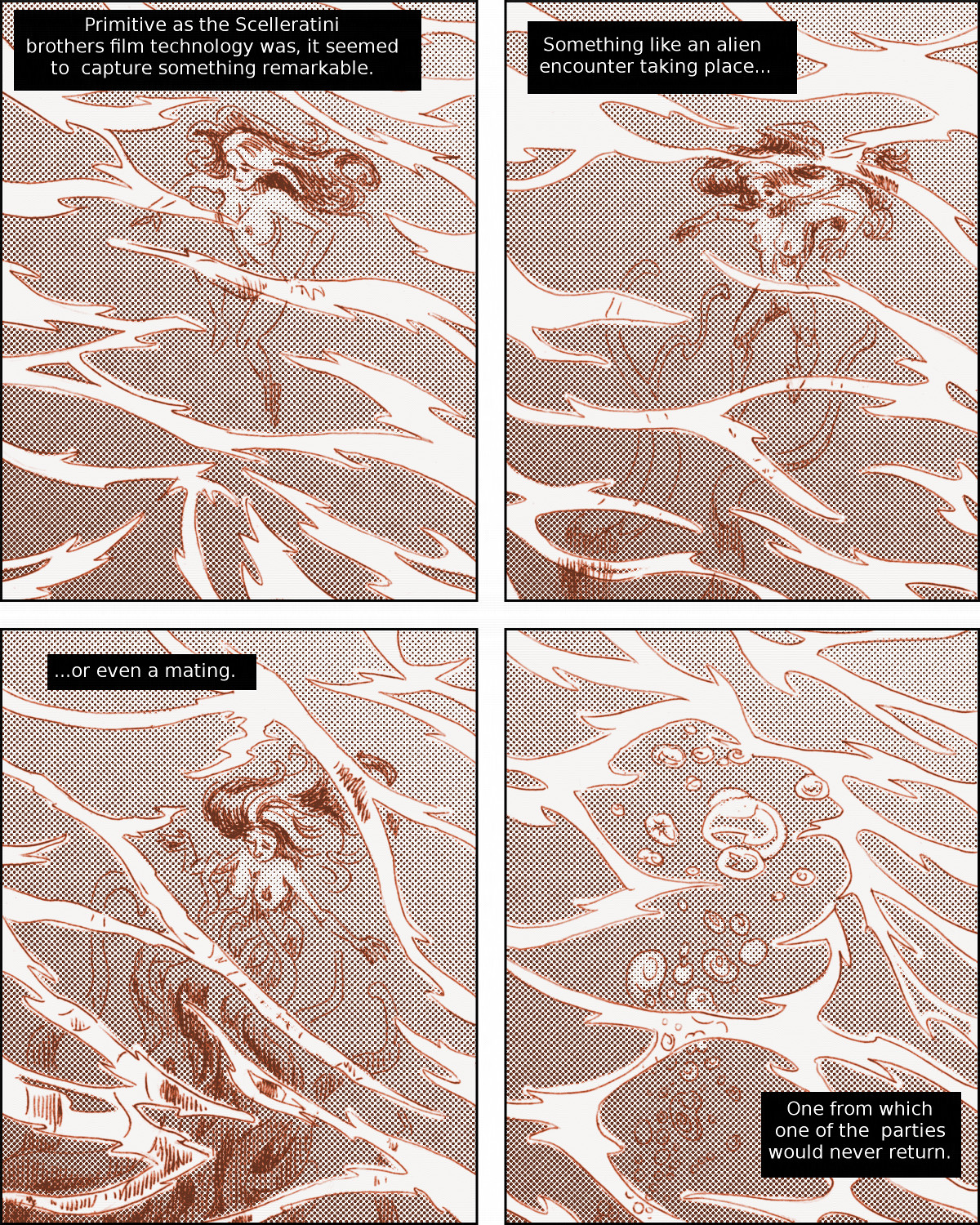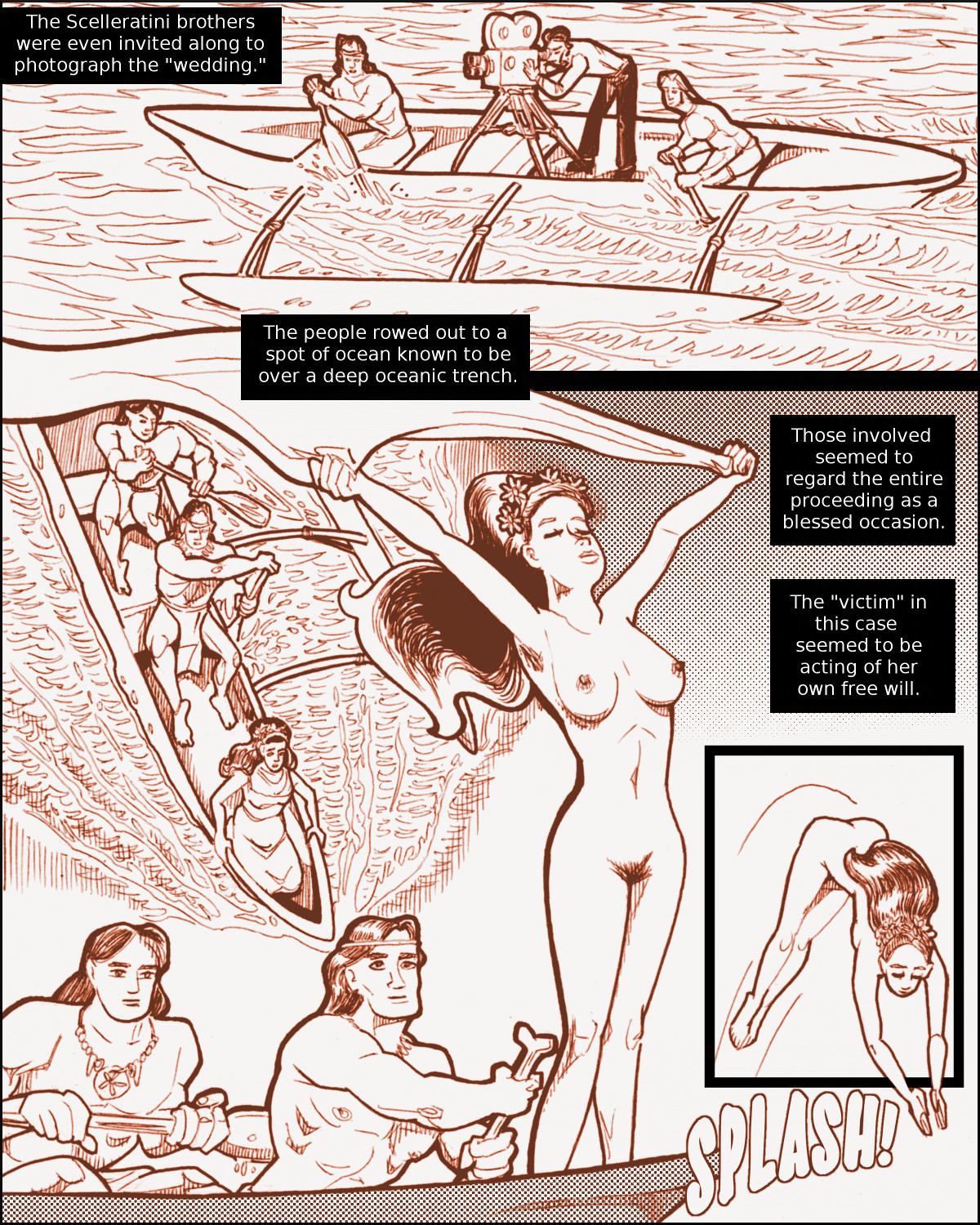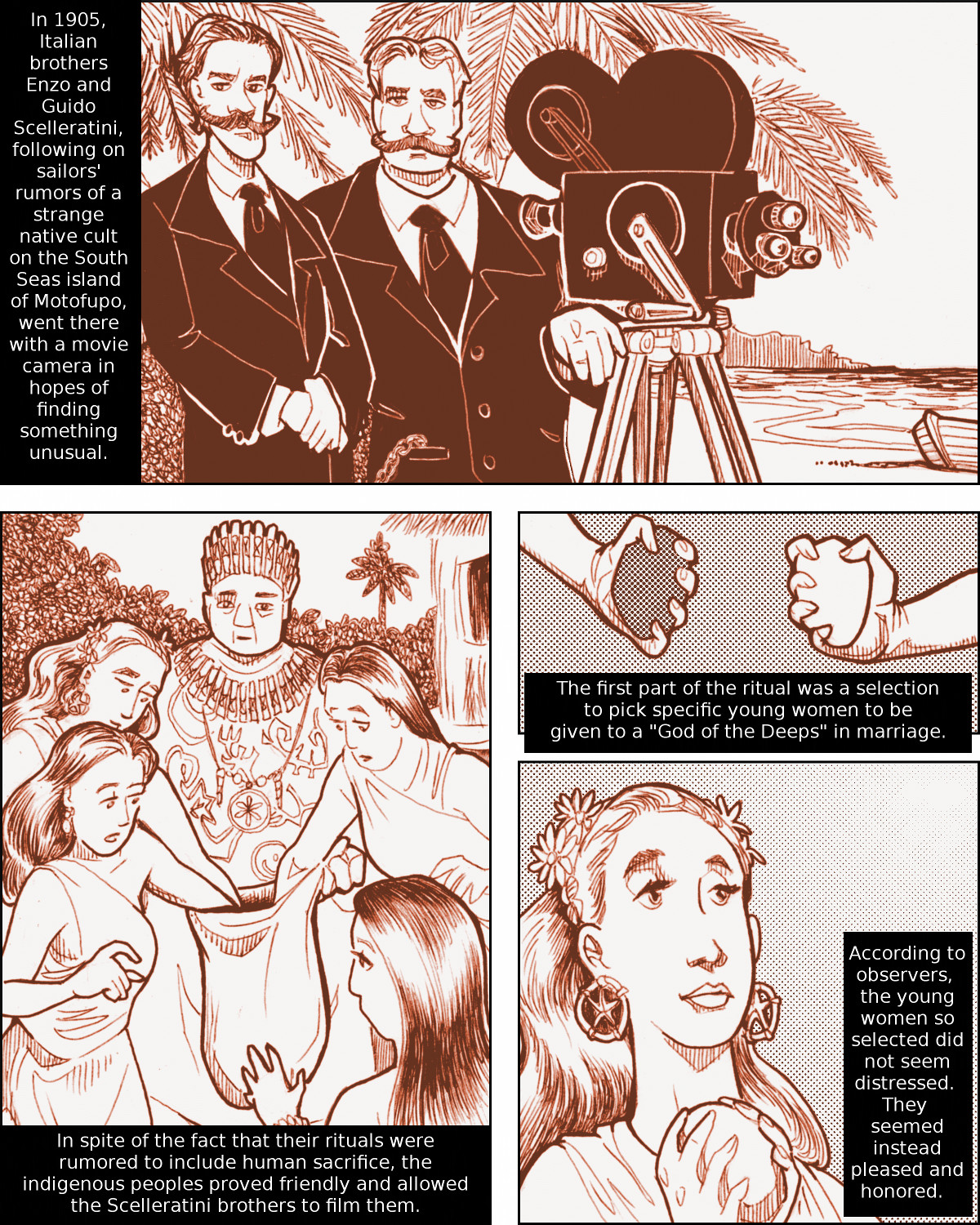
This work is licensed under a Creative Commons Attribution-NonCommercial-ShareAlike 4.0 International License.
PAGE 6 (Four panels)
(Note: These panels should be in sepia)
Panel 1: View of the Bride in the water, swimming upright but entirely below the surface (we can just see her as blurry outlines).
CAPTION – PSEUDO-NARRATION (1): The Scelleratini brothers’ film technology might have been primitive, but it captured something remarkable.
Translation (1): Por más primitiva que fuera la tecnología cinematográfica de los hermanos Scelleratini, logró capturar algo extraordinario.
Panel 2: View of the Bride, still in the water, with a few tentacles reaching out from the depths to touch her.
CAPTION – PSEUDO-NARRATION (2): It was something like an alien encounter…
Translation (2): Fue algo así como un encuentro con un extraterrestre…
Panel 3: The Bride now enmeshed in a roiling mass of tentacles.
CAPTION – PSEUDO-NARRATION (3): …or even a mating.
Translation (3): … o incluso un apareamiento.
Panel 4; The surface of the waters. The Bride is no longer visible. A few bubbles are breaking through the surface.
CAPTION – PSEUDO-NARRATION (4): It was an encounter from which one of the parties would never return.
Translation (4): Fue un encuentro del que una de las partes no regresaría jamás.
![]()
![]()
![]() Carnada (Español/Versión de página larga)
Carnada (Español/Versión de página larga)
Carnada (Español/Versión deslizante)

